Cultural Diversity of Worship

Not many people travel on a South African holiday specifically to visit sites or shrines, but those who do are particularly serious about it. There are often many religious adherents who travel here to attend church services and conferences or listen to African gospel music.
Not surprisingly, in our rainbow nation, we have a range of places of worship in many different styles. South Africa is graced with soaring cathedrals, ornate mosques, beautiful temples and simple chapels. Sacred forests or deep pools keep their secrets from all but a select few, simple rings of stones serve as places of worship in many areas and Muslim kramats (holy burial sites) are scattered around the country.
Western Cape Worship Attractions
Adherents of esoteric beliefs are particularly attracted to Cape Town. The central business district is dominated by the beautiful St George's Cathedral and the peninsula is surrounded by a protective ring of kramats in places as diverse as the Cape Flats, Signal Hill, Robben Island and Oudekraal.
In addition, Table Mountain has many examples of what very convincingly appear to be ancient solar observatories. Many people enjoy visiting the Moravian mission stations at Wuppertal, Elim and Genadendal in the Western Cape for their picturesque settings and architecture as much as for their spiritual associations.
Southern Hemisphere’s Largest Mosque
Durban celebrates its cosmopolitan diversity with the existence of the largest mosque in the southern hemisphere, the Jumma Musjid Mosque, as well as numerous, ornate Hindu temples including the beautiful Temple of Understanding and the Sri Ambalavanar Alayam Second River Temple, which is a national monument.
There are also a number of fascinating Catholic Mission stations dotted about the country which are interesting to visit, many of which are well over 100 years old. KwaZulu-Natal is also home to a unique and popular Buddhist Retreat Centre and there are other smaller Buddhist Centres in the Magaliesburg and the Western Cape.
The Eastern Cape town of Humansdorp, near Port Elizabeth, is the site of an interesting building. Alternately called the Kouga Cultural Centre and the Temple of the Sun, it celebrates the rich cultural heritage of the local Khoi San people and documents the string of stone age solar observatories that culminate in those on Table Mountain.
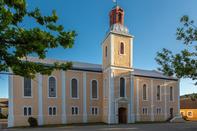
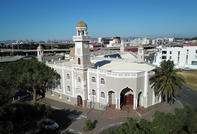
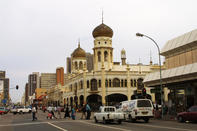
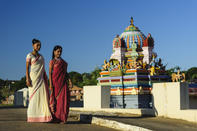
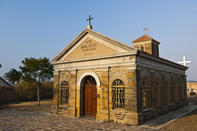
 Buddhist Retreat Centre in Ixopo - A glaringly white, domed Buddhist Stupa rearing out of the woodlands in the southern KwaZulu-Natal Midlan...
Buddhist Retreat Centre in Ixopo - A glaringly white, domed Buddhist Stupa rearing out of the woodlands in the southern KwaZulu-Natal Midlan... The Mariannhill Mission complex near Durban is one of the world's largest Trappist monasteries but, even so, it’s a wonderfully restful, s...
The Mariannhill Mission complex near Durban is one of the world's largest Trappist monasteries but, even so, it’s a wonderfully restful, s...